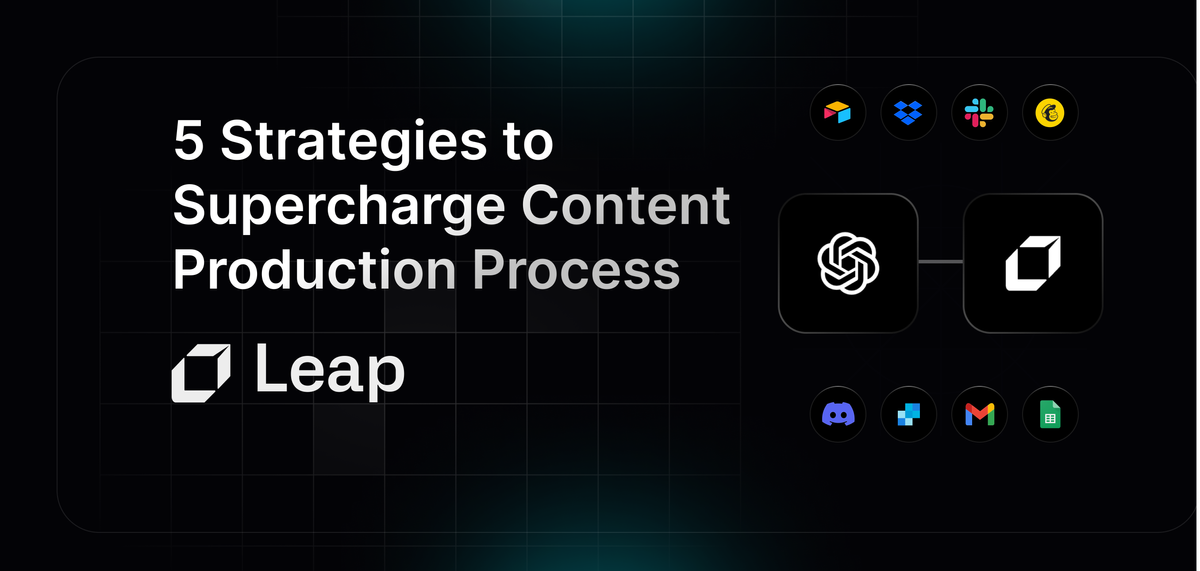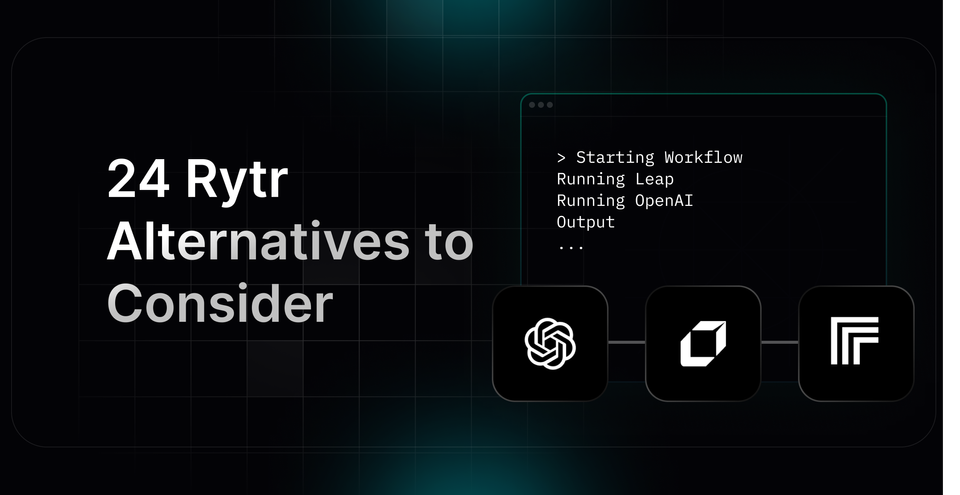5 Effective Strategies to Supercharge Your Content Production Process
Boost your content production process with these five proven strategies. Learn how to streamline your workflow and create high-quality content.

Content production process is the backbone of creating engaging content that resonates with your audience. From content ideation to promotion, each step is crucial in crafting content that attracts, engages, and converts. Understanding this process can help you create better content that connects with your audience, driving more traffic and conversions. Keep reading to learn how you can improve your content production process and create better content.

Understanding the Content Production Process

The content production process is the pivotal workflow that takes the inception of an idea through to the eventual publication of the content. It is a crucial aspect of content marketing strategies, playing a pivotal role in engaging the intended audience and driving traffic while converting leads. Marketers leverage this process to create content that aligns with the brand's marketing objectives, enhancing a brand's visibility and authority while boosting SEO rankings.
Well-defined Content Production Process
Implementing a well-defined content production process offers a plethora of benefits that can significantly elevate a brand's marketing efforts.
- The structured workflow supports the creation of content that resonates with the target audience, ensuring it is relevant, valuable, and engaging. This plays a vital role in establishing a brand as a thought leader in its niche, fostering trust and positioning it in the industry.
- The process aids in generating fresh, original content consistently, which is essential for staying relevant and competitive in the digital landscape.
- High-quality, regular content production is a key driver of SEO, improving the brand's visibility, driving organic traffic, and boosting search engine rankings. Consequently, this contributes to driving traffic, which in turn results in generating leads and achieving conversions.
Brand Consistency in Content Production
A robust content production process is essential for maintaining brand consistency, enabling marketers to align their content with their brand voice and values. This consistency builds trust and fosters a loyal audience that keeps coming back for more. A structured process allows for efficient content creation, streamlining workflows, ensuring deadlines are met, and optimizing resource allocation.
Streamlining Content Production with AI-Powered Tools
Now, AI-powered tools like Leap can help streamline your content production process by automating repetitive tasks, allowing you to focus on the creative aspects of content creation. With Leap's AI Workflows, powered by cutting-edge AI technology, you can enhance your content creation process, drive efficiency, and make your content marketing strategy more effective. By incorporating AI into your content production process, you can supercharge your workflows, boost productivity, and elevate your brand's visibility.
Get started with Leap’s AI Workflows today and revolutionize your content production process.

Related Reading
- Content At Scale Ai Detector
- Content Marketing Roi
- Social Media Automation
- Ai Content Creation
What are the Common Challenges in a Content Production Process?

Identifying Audience Needs
Identifying audience needs is crucial as it ensures that the content resonates with the target audience. This can be a challenge as audience preferences and behaviors evolve rapidly. It is essential to continuously generate content that resonates with the target audience.
This could involve conducting surveys, analyzing social media trends, or monitoring industry developments to gain insights into audience preferences. Creating content that does not resonate with the audience can result in disengagement, reduced traffic, and ineffective conversion rates.
Maintaining Quality and Consistency
Maintaining quality and consistency in content production is essential for audience engagement and brand building. This requires producing high-quality content at a consistent pace without compromising the brand's voice or message.
Achieving this balance can be challenging, especially when faced with tight deadlines or resource constraints. Inconsistencies in content quality can dilute the brand message and alienate the audience, leading to reduced trust and engagement.
Resource Allocation
Resource allocation is a common challenge in the content production process. Allocating appropriate resources, including time, personnel, and budget, effectively can be challenging. Insufficient resources can lead to rushed content production, compromising quality and consistency.
On the other hand, excessive resources may not always translate to better content quality. Finding the right balance in resource allocation is crucial for maintaining a consistent content production process.
Adapting to Changing Trends
Staying updated with industry trends, algorithm changes, and emerging content formats is essential for successful content production. Keeping up with these changes can be overwhelming.
Adapting to changing trends requires continuous learning, experimentation, and flexibility. Failing to adapt to changing trends might result in outdated content that does not resonate with the audience or align with marketing goals.
Collaboration Across Teams
Collaboration across teams is essential for ensuring a cohesive content strategy. Coordinating between writers, designers, and marketing teams can be complex, especially when team members work remotely or across different time zones.
Miscommunication or lack of alignment among teams can lead to inconsistencies in content quality and messaging, impacting the effectiveness of content marketing efforts. Effective communication and collaboration are essential for maintaining consistency in content quality and brand messaging.
What are the Main Stages of a Content Production Process?

Idea Generation
In content production, understand the importance of ideation in the content creation process. Ideation is where the magic begins, and content ideas are brainstormed based on audience insights, market trends, and competitor analysis.
It's essential to understand what resonates with the target audience and how to engage them effectively. By leveraging data analytics and market research, we can identify content gaps, understand audience preferences, and create content that truly adds value. Keeping an eye on competitor strategies can help us stay ahead of the curve and spark fresh ideas.
Content Research
Content research is the backbone of any successful content marketing strategy. It involves gathering relevant information and data on the topic to ensure the content is accurate and informative. There are two types of research to employ: primary research and secondary research.
Primary research involves conducting surveys, interviews, or focus groups to provide unique and insightful information directly from the source. On the other hand, secondary research utilizes existing sources like articles, journals, or academic research to provide background information on the topic. By combining both types of research, we can create well-informed content that resonates with the audience.
Planning
Creating a content calendar and strategy is crucial for success in content production. Planning helps set clear objectives for each piece of content and ensures cohesive messaging across different platforms.
A well-thought-out content calendar can help maintain consistency in content production, while a robust strategy can guide content creation based on the needs and preferences of the target audience. By defining goals and KPIs for each content piece, we can optimize our efforts and measure the success of our content marketing campaigns effectively.
Creation
The creation stage is where ideas come to life through writing, recording, or designing. It's the most creative phase of the content production process, where we express our ideas and thoughts in a compelling manner.
Whether it's crafting a blog post, shooting a video, or designing an infographic, this stage is all about bringing our vision to reality. By leveraging storytelling techniques, visual elements, and interactive features, we can create engaging and impactful content that resonates with our audience.
Review and Revision
After creating content, it's essential to review and revise it to ensure quality standards are met. This step involves editing, proofreading, and refining the content to align with brand voice and style guidelines.
By paying attention to detail, we can eliminate errors, improve readability, and enhance the overall quality of our content. Feedback from peers or collaborators can also help us identify blind spots and make necessary adjustments to improve the content further.
Publication and Distribution
Once the content is ready, it's time to publish it across chosen platforms and promote it to reach the target audience. The publication and distribution stage is where we leverage various channels, such as social media, email marketing, or content syndication, to amplify our content's reach.
By analyzing performance metrics and audience engagement, we can refine our distribution strategy and optimize content delivery for better results. This step ensures that our content reaches the right audience at the right time, driving brand awareness and engagement effectively.
Leap helps you to automate your work with the power of AI
Partnered with Zapier, Vercel, and more, Leap enables you to supercharge your work by allowing you to create custom AI automations. Create sophisticated AI automations with no-code. Connect the tools you love with best-in-class AI text, image, and audio models.
Supercharge your existing tools with seamless AI integrations to OpenAI, Microsoft, and more. From summarizing documents, to voice translation, to AI call transcription, to AI avatar and asset generation, to SEO automation, to even automating the cold email creation and sending process, automate anything with Leap Workflows. The opportunities for automation are endless with Leap workflows.
Try Leap’s AI Workflows tool for free today.
5 Strategies to Supercharge Your Content Production Process

1. Streamline Ideation with AI Tools
Utilizing AI tools can significantly accelerate the generation of content ideas. Before engaging with any AI tool, it is crucial to have a clear understanding of your content goals. These goals could range from boosting brand awareness to generating leads.
AI tools can conduct trend analysis to suggest timely and relevant content ideas based on current industry trends.Incorporating audience insights can be pivotal in using AI tools that analyze audience data to propose ideas that would resonate with your target demographic. Choosing the right AI tool can be a game-changer, and there are several options available.
2. Enhance Collaboration and Workflow Management
The significance of using project management and collaboration tools in streamlining content production workflows cannot be overstated. Assessing your current workflow to identify bottlenecks and areas for improvement is a critical first step.
Selecting a project management tool like ClickUp, Narrato, or CoSchedule can help streamline processes. Establishing a collaborative workspace where team members can work together, share files, and communicate effectively is key. Implementing workflow automation strategies can further streamline the process by automating repetitive tasks.
3. Optimize Content with SEO Tools
Integrating SEO tools in content production processes can significantly enhance content visibility and ranking on search engine results pages. Conducting keyword research using SEO tools can help find high-volume, low-competition keywords relevant to your content.
Content optimization involves fine-tuning your content with chosen keywords, including title tags, meta descriptions, and incorporating them throughout the body. Conducting SEO audits on existing content and tracking performance using tools like Google PageSpeed Insights, Ahrefs Webmaster Tools, Google Analytics, Google Ads Keyword Planner, and Copyscape are essential steps in optimizing content.
4. Automate Repetitive Tasks to Save Time
Automation can save valuable time on repetitive tasks in content production. Identifying common repetitive tasks such as social media posting, email scheduling, and content formatting can help creators focus on the more creative aspects of content creation. Setting up automation workflows with tools like Leap AI and regularly monitoring their effectiveness to make necessary adjustments is key to optimizing the process.
5. Utilize Analytics for Continuous Improvement
Analytics play a crucial role in measuring content performance and guiding strategic adjustments for continuous improvement. Establishing clear, measurable goals by defining key performance indicators (KPIs) is essential.
Selecting an appropriate analytics tool and analyzing data to gain insights into content performance is crucial. Leveraging data insights to refine content topics, formats, and distribution channels for improved performance fuels continuous improvement.
Related Reading
- Content Scaling
- Content Automation
- Content Workflow
- Content Marketing Automation
- How To Make Ai Content Undetectable
- How To Train Chatgpt To Write Like You
- Content Marketing Workflow
- Best Instagram Automation
- Ai Powered Content Creation
- Ai Content Optimization
- Content Planning For Social Media
- Ai Content Management
- Ai And Content Marketing
- How To Automate Content Creation
- Automate Blog Posts
- Cost Effective Content Marketing
Implementing Your Enhanced Content Production Process

Audit Your Current Process
To enhance your content production process, the first step is to audit your current process. This means evaluating your existing workflows to identify what's working well and what areas need improvement. By engaging with your team to gather feedback, you can also collect insights on the challenges they face and suggestions for enhancements.
Set Clear Objectives
Defining clear objectives is key to implementing successful enhancements. Clearly outline what you aim to achieve with the enhancements, whether it's increasing content output, improving content quality, or reducing production time. It's crucial to ensure that these objectives are aligned with your broader business goals.
Integrate Strategies into Workflows
Developing a step-by-step plan is essential for integrating new strategies and tools into your existing workflows. This plan should outline the roles and responsibilities of team members, the sequence of actions, and how the tools will be used at each stage of the content production process.
Monitor, Evaluate, and Optimize
Setting up KPIs for monitoring is crucial for tracking the effectiveness of the enhanced content production process. These KPIs could include measures of productivity, content quality, audience engagement, or SEO performance. Continuous optimization based on feedback and performance data is essential. This involves adjusting workflows, trying out different tools, or updating your content strategy.
Continuous Learning and Adaptability
It's important to view the process of enhancing your content production workflow as ongoing. As new technologies emerge and your business evolves, there will always be opportunities to make further improvements. Embrace continuous learning and adaptability to ensure that your content production process remains efficient and effective.
Create Game Changing Automations Today With Leap’s AI Workflows
The process of creating content is often fraught with repetitive tasks that can be time-consuming and take away from the creative aspect of content production. Automation can help streamline workflows, increase efficiency, and allow content creators to focus on creating high-quality content that resonates with their audience. With Leap's AI Workflows tool, creators can take their content production process to the next level by harnessing the power of AI to automate tasks and supercharge their work.
Try our AI Workflows tool for free today.
Related Reading
- Midjourney Alternatives
- Ai Content Creation Tools
- Best Linkedin Automation Tools
- Social Media Automation Tools
- Content Automation Tools
- Writesonic Alternative
- Copy Ai Alternatives
- Jasper Ai Alternative
- Rytr Alternatives
- Wordtune Alternatives
- Ai Content Generator Api
- Content Automation Services
- Frase Alternative




